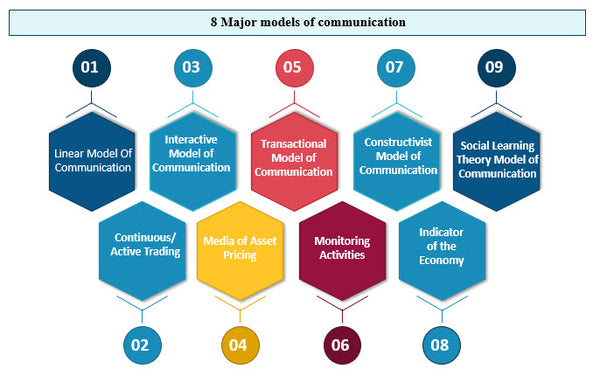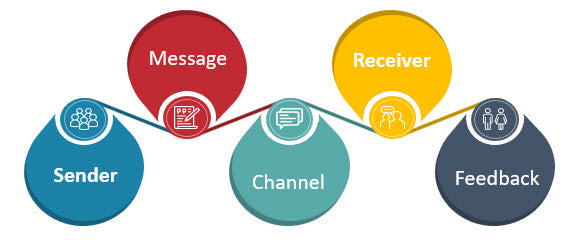The Communication Model: A Comprehensive Analysis
At its core, the communication model consists of three fundamental components: the sender, the message, and the receiver. These components are interconnected and influenced by various factors that shape the communication process.

The History Of The Communication Model :
The communication model has evolved over time and has been influenced by the advancements in technology, philosophy, and the study of human behavior.
Here is a brief history of the communication model:
- Ancient communication: Communication began with simple gestures and body language. People used hand signals and facial expressions to express themselves.
- Oral communication: With the development of language, people began to communicate orally. This was the first form of verbal communication and involved the use of words, tone, and pitch.
- Written communication: Writing emerged around 4000 BCE, and it allowed people to communicate and record their thoughts and ideas. This form of communication could be preserved for future generations.
How The Communication Model Work?
The communication model explains how people exchange messages and information with each other. The model consists of five elements: sender, message, channel, receiver, and feedback.

- Sender: Also known as the source, the sender initiates the communication process. The sender creates the message and transmits it through a channel to the receiver.
- Message: The message is the information or content that the sender transmits to the receiver. This could be verbal, written, or non-verbal.
- Channel: The channel is the medium through which the message is transmitted, such as face-to-face conversation, phone call, email, text message, or social media platform.
- Receiver: The receiver is the person or group to whom the message is intended. The receiver receives the message and interprets it.
- Feedback: Feedback is the response or reaction that the receiver gives back to the sender. It provides the sender with information on whether the message was received and interpreted correctly.
.
The communication model is often depicted as a circular process because communication is ongoing, and feedback can lead to new messages being sent. It is important to note that communication can be influenced by noise, which refers to anything that disrupts the sending or receiving of a message, such as physical distractions or language barriers.
The Benefits Of The Communication Model
The communication model is a process that outlines the steps involved in effective communication between two or more people. It includes a sender, a receiver, a message, a channel, feedback, and noise.
.
The benefits of using this model include:
.
- Improved clarity: The communication model helps to ensure that the message is clear, concise, and easily understood by the receiver. It reduces ambiguity and confusion, leading to better communication.
- Better understanding of the intended message: Through the model, the sender has a better understanding of how to frame the message to fit the receiver’s context. This means that the message is more likely to be properly received.
- Shareholders Greater efficiency: The communication model helps to streamline communications. This makes the process more efficient, which saves time, resources, and reduces stress.
- Enhanced relationships: When communication is effective, it enhances the relationship between the sender and the receiver. It fosters open and honest communication, trust, and understanding.
- Improved decision-making: The communication model enables stakeholders to share information, facilitating more effective decision-making.
- Increased productivity: Improved communication via the model leads to greater productivity in the workplace. It helps people to work more efficiently, reducing the time spent on misunderstandings and confusion.
- Reduced ambiguity and conflict: The communication model reduces ambiguity and misinterpretation, minimizing the potential for conflict.
.
8 Major Models Of Communication.
1. Linear Model of Communication: This model assumes that communication is a one-way process that starts with a sender who creates a message that is then sent through a channel to a receiver.
.
2. Interactive Model of Communication: This model emphasizes the importance of feedback and recognizes that communication is a two-way process. It involves the sender encoding the message, the receiver decoding the message, and both parties exchanging feedback.
.
3. Transactional Model of Communication: This model emphasizes the dynamic and continuous nature of communication, where both the sender and the receiver are involved in the process and continuously exchange messages that are influenced by the context and the environment.
.
4. Constructivist Model of Communication: This model views communication as the construction of shared understanding and meaning between two or more individuals. It emphasizes the importance of social construction, where individuals create meaning through their interactions with others.
.
5. Social Learning Theory Model of Communication: This model views communication as a process of social learning, where individuals acquire knowledge and skills through the observation and imitation of others. It emphasizes the role of reinforcement and feedback in shaping communication behaviour.
.
6. Cultural Model of Communication: This model emphasizes the importance of cultural context in shaping communication behavior. It recognizes that communication is influenced by cultural values, beliefs, and norms, which can vary significantly between different groups and societies.
.
7. Cognitive Model of Communication: This model emphasizes the role of mental processes in communication, including perception, attention, interpretation, and memory. It recognizes that individual differences in these processes can affect communication effectiveness.
.
More from:
8 Major models of communication




